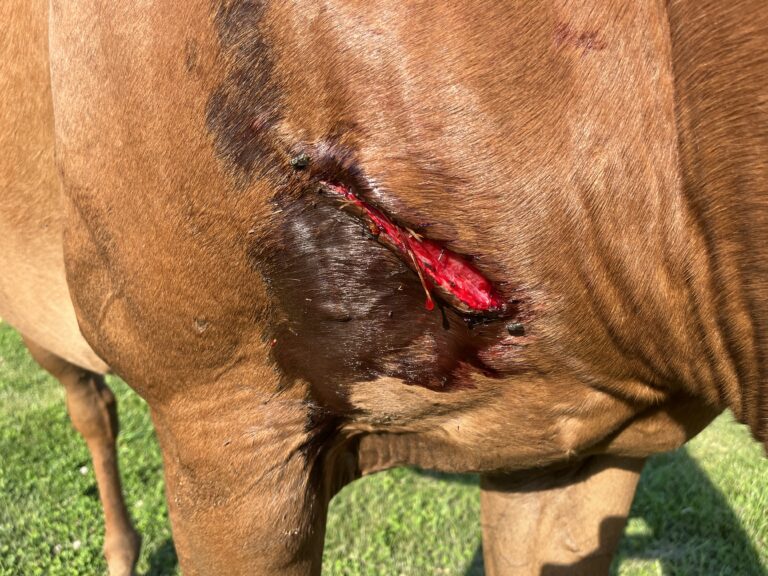In the October 2009 issue of Dressage Today, three experts provided advice on clipping. They offer considerations to help you decide if and when to clip, what particular clip is best for your horse and how to make a clipping session go well. The experts are: trainer Suzy Armando out of Ringoes, N.J.; Jennifer Miller, DVM, a Canadian native whose practice is in Cave Creek, Ariz.; and trainer and rider Sharon Schneidman of Westmanton Stables in Castle Rock, Colo.
Here is some further advice on protecting a clipped horse and calming a horse during a clipping session.
Protecting the Clipped Horse
If you make the decision to clip, you must also make the commitment to care for the horse accordingly. That will most likely mean a bigger investment in clothing and more time spent changing that clothing. Armando has a chart that helps her decide on blanketing the clipped horses. “If it is 50 to 60 degrees, I use a sheet. Forty to 50, I use a mid-weight blanket. Below 40, I use a heavy blanket. If the temperature really dipped, or if I thought a particular horse needed extra coverage, I layer accordingly. If it is a windy, damp day, I might blanket on the heavier side.”
Schneidman is a big fan of layering. She starts with a cotton sheet, choosing a style that has a nylon lining in the shoulders for a horse that is prone to rubs. The sheet is topped with temperature-appropriate blankets. “We change our horses’ blankets a great deal. With a clipped horse, you have to pay a lot more attention to a horse’s body temperature, and they will probably need wider-ranging wardrobes than a non-clipped horse.” She adds that, for the horse that is turned out, all layers should have proper leg straps so the layers don’t shift and slide.
Particularly in the Southwest, where winter days can be too warm to leave the blankets on all day, remember that a closely clipped coat exposes your horse’s skin. “Photosensitive Paints, Appaloosas or other horses with non-pigmented skin can become irritated when they are exposed to direct sunlight,” says Miller. “On those balmy days, even in the winter, ultraviolet rays can be intense and give the horse a painful sunburn.”
Calming the Horse
Unfortunately, you don’t always have the advantage of starting with a baby horse to get him used to the clipping process. If you are dealing with a horse that is unfamiliar with clippers, take some time to desensitize him. Try to use the quietest clippers you can, and be very gentle. Allow him to feel the vibration of the equipment on a shoulder, his neck, and then other parts of his body before actually beginning to clip. “You want him to accept the feeling all over his body before beginning,” says Armando.
“With a really frightened horse, consider asking the vet to sedate the horse.” Schneidman agrees. “Better to tranquilize the horse than to argue with him. Sometimes, after a couple of years clipping with a tranquilizer a horse will clip without a problem.” Breaking the job into a couple of sessions is another way to accustom the horse to clipping without overwhelming him.
Have a helper on hand. “I am not a big fan of clipping a young or difficult horse without someone to hold him,” says Schneidman. “I don’t want to put the horse in a situation in which he can panic.” Horses, she adds, are pretty bribable. “Give them lots of treats, and they generally come around.”
For a copy of the article that appeared in the October 2009 issue, call 301-977-3900.











